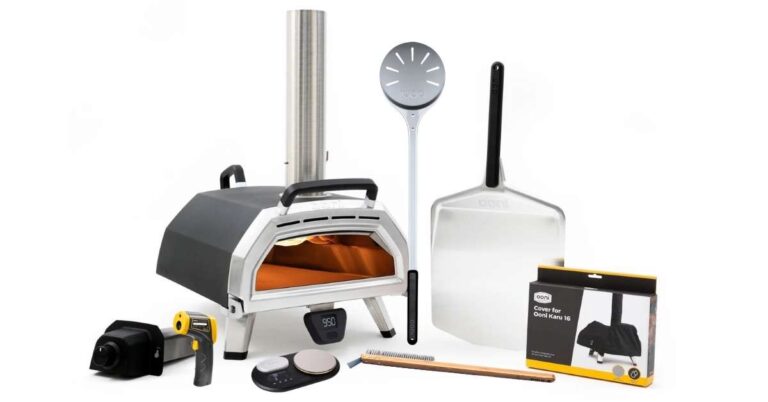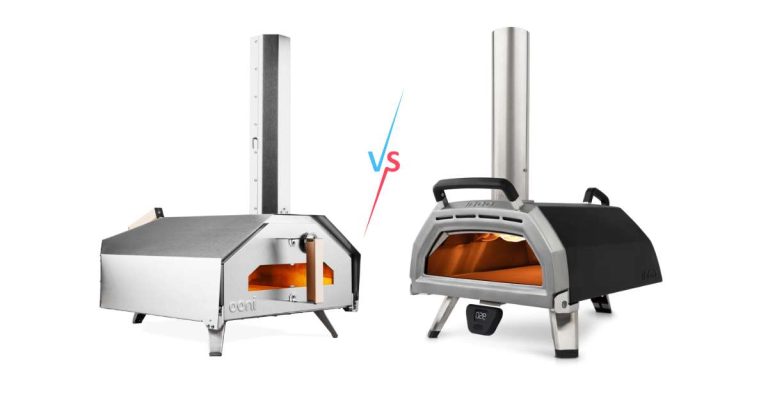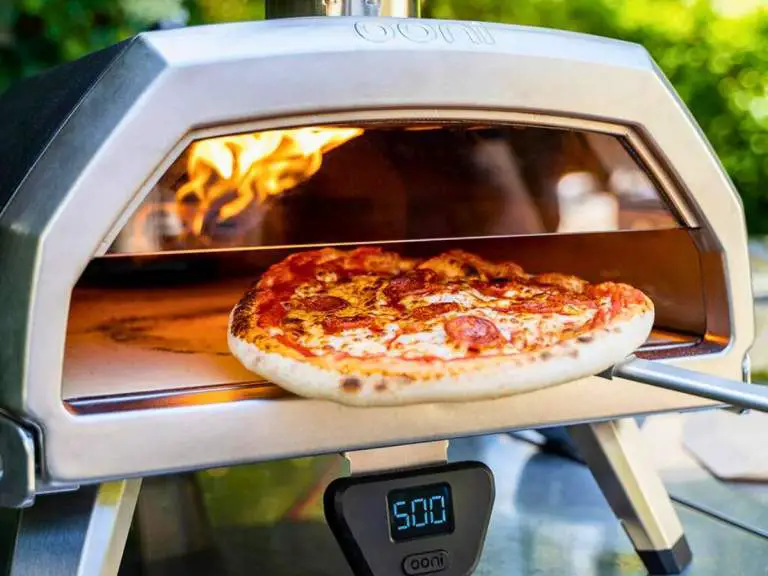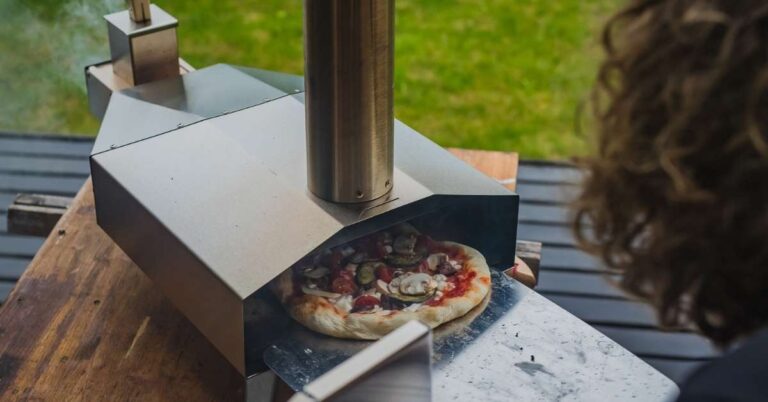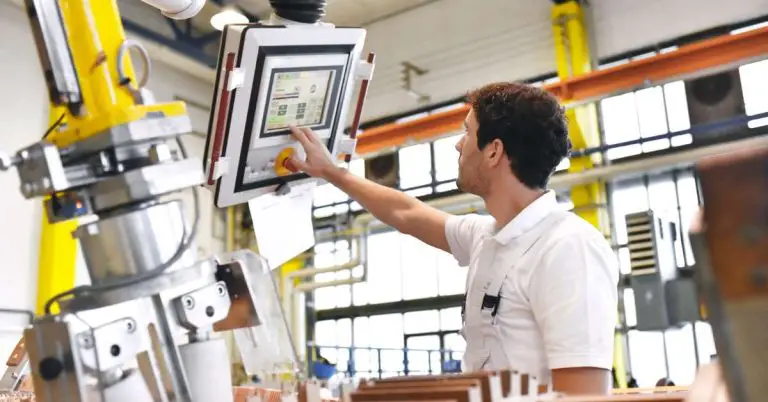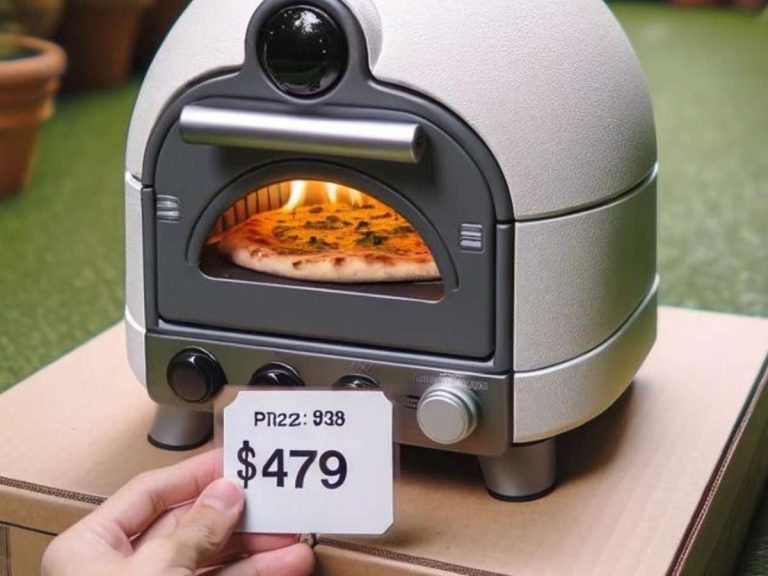Can Ooni Pizza Ovens Be Used In The Rain? Yes, But There’s A Catch…
Making pizza in a professional outdoor pizza oven, like an Ooni, right in your own backyard, is a dream for many people. But if it’s raining, can Ooni pizza ovens still be used safely outside?
Ooni pizza ovens can be used in rainy conditions as long as you take a few precautions before cooking. In fact, Ooni ovens have been tested in temperatures as low as -22C or -8F. So, whether you have the Ooni Frya, Karu, Koda, or Pro models, they’ll keep cooking even in challenging weather. Just be prepared to embrace the rain or snow yourself!
But while Ooni pizza ovens are structurally capable of being used in the rain, there are some reasons why you might not want to in the first place.
Let’s go over how Ooni pizza ovens are built to withstand wet and rainy weather, the downsides of using an Ooni in the rain, as well as some tips for using your Ooni pizza oven in less than ideal weather conditions.
Using An Ooni Oven In The Rain: Quick Guide
| Oven Name | Rain/Snow Usage Advice |
|---|---|
| Ooni Karu 16 | While wood and gas options can work in rain or snow, make sure the wood is stored in a dry place to prevent humidity. Using wet wood will negatively affect the temperature and cooking process. |
| Ooni Karu 12 | Similar to the Karu 16, keep the wood dry. If using charcoal, ensure it’s not damp as well because it can affect ignition and temperature. |
| Ooni Karu 12G | Ensure wood and charcoal are dry before use. Gas options are more rain-friendly, but always ensure connections are dry and safe. |
| Ooni Koda 16 | Gas ovens are generally more adaptable to rain or snow because liquid fuel can’t absorb moisture. However, ensure that gas connections remain dry and safe. |
| Ooni Koda 12 | As with the Koda 16, make sure the gas connections are dry and safe. Avoid water exposure to the gas tank. |
| Ooni Fyra 12 | Wood pellets must be kept completely dry. Wet or damp pellets can clog the feeder and affect cooking. Store pellets in a dry place. |
| Ooni Volt 12 | While the Volt 12 is designed for both indoor and outdoor use, avoid exposing it to direct rain. Ensure it’s on a dry surface and that electrical connections are not exposed to water. |
Tip: You can store your Ooni oven outside in all sorts of weather as well, just make sure you’re using an Ooni oven cover/carryon case to keep it dry. Find the right cover for your Ooni oven here.
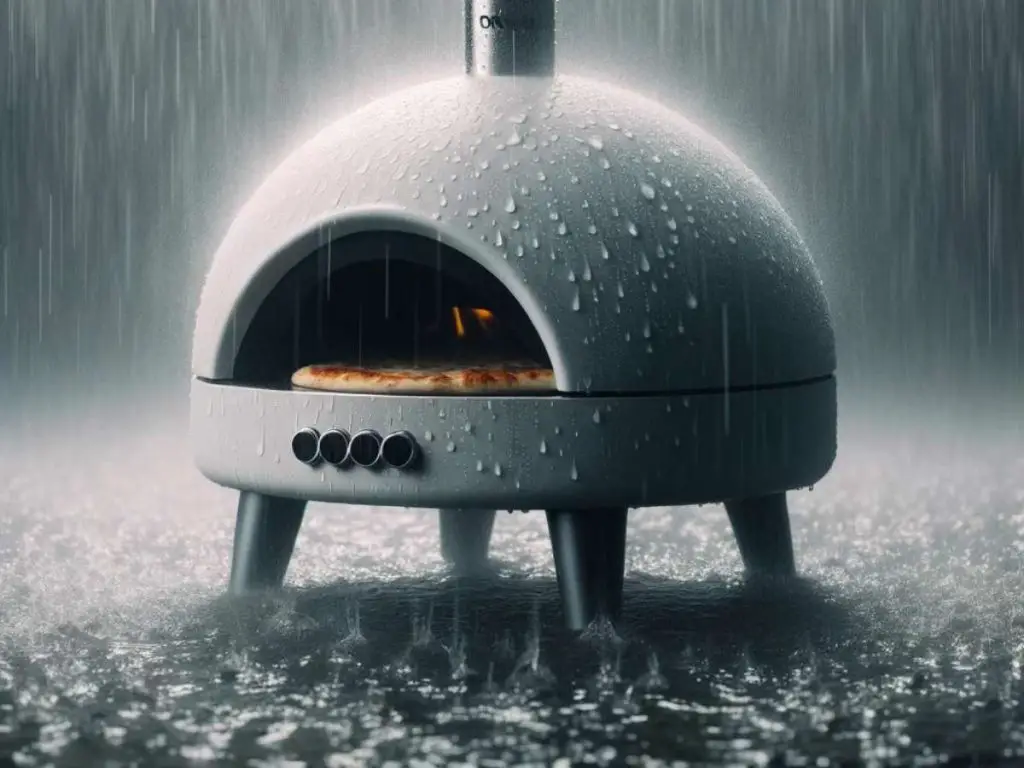
See Also: Ooni vs Roccbox Pizza Ovens Review
Ooni Pizza Ovens Are Built To Withstand Rain
Ooni is an outdoor pizza oven company based out of Edinburgh, Scotland. This is a fact Ooni likes to point out because, as you might already know, Scotland can get quite cold and rainy for a good part of the year. This means their pizza ovens have been designed for and tested in all kinds of nasty weather situations.
All Ooni pizza ovens are fully insulated and made using stainless steel, which means your Ooni won’t lose heat or rust when used in the rain. This is great news for those of us planning to make pizza for family or guests on a drizzly or rainy day.
For most people, this will mean using their Ooni pizza oven during a period of light precipitation. In this case, you’ll still want to make sure you’re working under some protection from the elements. The outside of the oven might be able to get wet, but your toppings and pizza peel need to stay dry.
Note: A raw pizza dough will not slide off of a wet pizza peel correctly, and if that happens, your pizza might land toppings side down inside the oven and create a big mess. Always make sure your pizza peel stays dry when using your Ooni pizza oven in the rain.
Ooni Pizza Ovens Should Not Be Used In Extreme Wind Or Driving Rain
Despite all Ooni pizza oven’s ability to withstand getting wet, you should be advised that these pizza ovens should not be used in extreme weather conditions like high winds or driving (sideways) rain. Under extreme conditions like these, wind and rain can blow into the cooking chamber of the oven and disrupt the cooking process or damage the interior.
This is especially true when you consider that all Ooni pizza ovens features a stone “baking board” as the primary cooking surface. These baking boards, like all pizza stones, should never get wet under any circumstances or you will risk cracking as the water will expand under extreme heat.
In other windy or cold weather situations, you might have trouble keeping the stone at its consistent maximum temperature of around 930F. You might also find that, if using a gas powered Ooni oven, that the flame goes out when you turn the gas down to lower levels. But for most people only cooking 1 or 2 pizzas, this shouldn’t be a major concern.
Related Post: How to Light any Ooni Pizza Oven
How To Use Your Ooni Pizza Oven In The Rain
Using the Ooni in the rain presents some unique challenges, namely preventing water from getting inside the actual baking chamber of the oven. If too much water gets inside the oven, it can cause the pizza to cook unevenly and even crack the baking stone. To make sure your pizza cooking experience in the rain goes to plan, follow these guidelines:
- Location: Choose a location at least 3 feet (or 1 meter) away from walls or other structures. While the Ooni’s retractable legs make it adaptable to most surfaces, avoid placing it on glass or plastic. This is important whether it’s raining or not.
- Shelter: While the Ooni can function in the rain, it’s best to set up your workstation under shelter or use an umbrella. This ensures your toppings and peel remain dry. Just make sure your shelter isn’t too close to your house.
- Wind Direction: If it’s windy, position the Ooni so the wind hits its back to prevent rain from blowing directly into the oven while it’s lit. For wood or charcoal-powered models (like the Karu or Frya series), a gentle breeze can actually improve the flame distribution. However, try to avoid wind blowing directly into the oven’s front as it can push flames out the back and undercook your pizza.
- Lighting the Oven: Once you’ve made sure the Ooni is shielded from wind and your workstation is rain-protected, light the oven as usual. In colder or windier conditions, maintain a strong flame to prevent it from going on and to retain heat, but you can turn it down when you launch the pizza.
- Fuel Management: For charcoal or wood-fired models, start with a small fuel amount and add more gradually. This promotes airflow and sustains a robust flame. Do not overstuff the fuel tray or use lighter fluid.
- Safety: Always prioritize safety. Keep children and pets at a safe distance and never leave a lit Ooni unattended, rain or shine.
How To Store Your Ooni Pizza Oven
Since Ooni pizza ovens can handle cooking in different kinds of weather conditions, you might be tempted to keep your Ooni outside all year long. This isn’t a good idea.
The best place to store your Ooni pizza oven when not in use is indoors, especially if you don’t plan on using it for an extended period of time. If you use your Ooni pizza oven frequently, and live in a moderate climate, you can safely store it outdoors, but make sure it’s covered or sheltered in case of unexpected extreme weather like wind, rain or snow. However, in almost all cases, it’s better to store the Ooni pizza oven indoors – even if it’s a little inconvenient.
Also, remember to make sure that the chimney cap is on when it’s not in use. If it happens to rain while stored outside without the chimney cap, rain can collect inside the oven and damage the interior. Keeping the chimney cap on while not in use outside will help prevent damaging the inner workings of the oven and maximize its lifespan.
| Storage Aspect | Tips |
|---|---|
| Cleaning Before Storage | Make sure the oven is clean and free from food residues. This prevents mold and unwanted odors. |
| Dismantling | If space is an issue, consider dismantling removable parts like the chimney for compact storage. |
| Cover Use | Buy an Ooni-specific cover if storing outdoors. It’s designed to fit perfectly and offers optimal protection. You can always use a generic tarp as well, but it won’t be as good of a fit. |
| Moisture Absorption | Consider placing silica gel packets inside the oven when storing for long periods. This helps absorb any residual moisture, but remember to remove them before using the oven again. |
| Base Protection | If storing on a wooden shelf or surface, place a protective mat underneath to prevent any potential staining or damage. |
| Inspection | Before each use, especially after long storage periods, inspect the oven for any signs of wear, damage, or pests. |
Note: If you find that the stainless steel components of your Ooni oven changes color after regular use, it’s not because of exposure to rain or weather conditions. Stainless steel can change color, slightly, when it’s exposed to high heat, and all Ooni pizza ovens reach temperatures of up to 1000F on a regular basis.
Related Questions
Can You Use Ooni In Garage?
Ooni pizza ovens are meant for outdoor use only, so normally you wouldn’t want to use it in your garage. On the other hand, if you’re using your Ooni pizza oven right next to a wide open garage door there shouldn’t be any problems as long as it’s 3 feet (1 meter) from any walls. Wherever you use you Ooni pizza oven, never leave it unattended and don’t let children or pets near it while in use.

